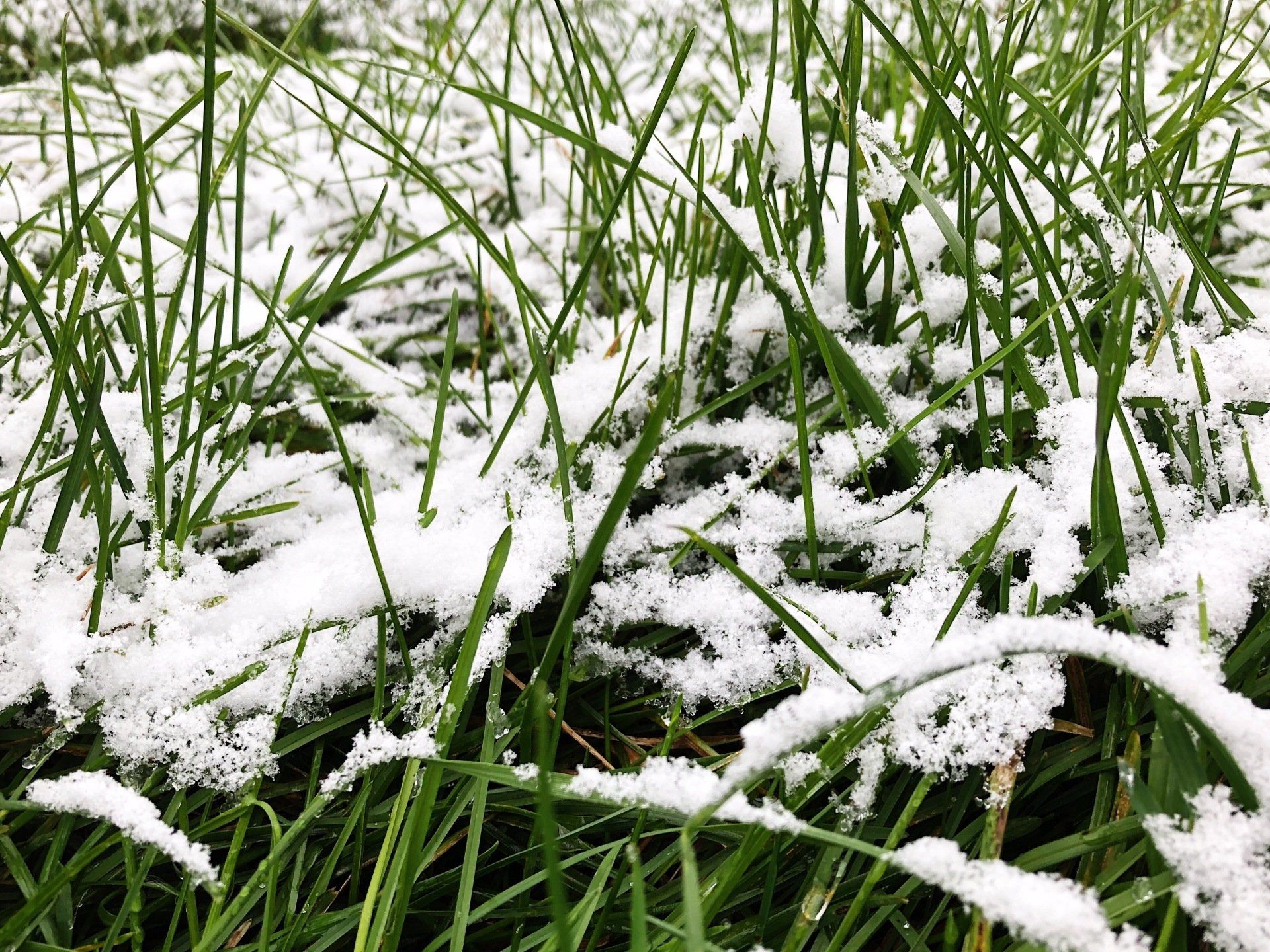How to Care for Your Lawn in Winter
How to Care for Your Lawn in Winter

It's a common misconception that snow means your lawn maintenance is over. After all, if you can't see it, you can't care for it, right?
Wrong.
Even though you can't see it, your lawn still needs you.
When temperatures drop below 40° F, your grass will become dormant, and won't grow much, if at all. And while this means no mowing, there is other work to be done.
Aerate the Grass
Aerating your lawn is a process that prevents soil compaction by loosening the soil. It not only allows your grass roots to grow deeper, but also for better transfer of vital water, air, and nutrients. A regular aeration schedule will create healthier, greener grass that grows more vigorously.
To prepare your lawn for winter, this step is done before your area's first expected frost date. For small yards, a steel spike aerator is ideal. If your yard is larger, you may want to consider a core aerator. These are common tools that Home Depot will typically have in their tool rental department.
Fertilize
Now that you've aerated your lawn, it's the perfect time to fertilize, as the nutrients will go much farther. The most effective way to do this would be to use a Lawn Spreader.
Lawn spreaders are a tool meant to evenly distribute fertilizer and grass seeds across your lawn. There are drop spreaders and broadcast, or rotary, spreaders. A drop spreader is more precise but works best for smaller lawns. A broadcast, or rotary, spreader is less precise but will cover more ground more quickly.
Fertilizing your lawn before winter is an important step, as it will give your lawn the nutrients it needs to store for winter. Once spring rolls around, your lawn will be bouncing back in no time thanks to the fertilizer.
Dormant Seeding
Dormant seeding is when you wait for the temperatures to be consistently below 40° F before seeding your lawn. If you've already aerated and fertilized your lawn, it will be ready for seeding.
This step is best done right before a big snowfall. When the seeds are covered in snow, they will remain dormant, reducing the need to seed in the spring.
However, this method does come with some risks. Should the weather warm enough to melt the snow during winter, it may also warm just enough for the seeds to sprout. These new sprouts will not survive a frost, and you will need to remove the dead seeds before you can seed again in Spring.
Rake and Water
Next, you'll want to rake your lawn. This will help break up any remaining soil clumps, and cover your newly planted seeds. Remember, we're not burying them, just covering slightly.
Then you'll water. Keeping your lawn moist up until the first freeze is extremely important. Water helps give your lawn's root system the strength is needs to survive the winter. Skipping this step may leave part of your lawn dead, making for a disappointing spring discovery.
Clear Debris
Clearing your lawn before and during winter is a crucial step when maintaining your yard. Long grass, fallen leaves, yard tools, furniture, or other objects can cause your lawn to suffocate, as well as inviting damaging pests and disease.
Make sure to clear or mulch fallen leaves, trim your grass, and remove any yard furniture or fire logs to prevent killing your grass.
Lower the Mower's Height
When mowing your lawn before winter, it's important to cut it shorter than you might normally. Long grass can spread disease, suffocate itself, and incur damage from frost. Cutting your lawn to about 3/4 of an inch tall can prevent your lawn from being matted down by heavy snow.
Stay Off The Grass
Typically when you walk on your grass, the weakened pieces are repaired and replaced with new grass growth. When your lawn is dormant, this isn't happening. Your lawn has paused growing, and therefore paths that are walked too often can become weak or break as it's walked on. These heavily-trafficked areas will take longer to re-green, and may require additional care in the spring.
That being said, if a tree branch or another object falls onto your frozen grass, prioritize removing the debris over staying off your lawn. The fallen object will cause more damage than you walking on your lawn to retrieve it.
Avoid Using Salt On Or Near Your Lawn
During the winter, rock salt can be a saving grace when it comes to clearing your driveway and walkways. While that's true, it can also be a detriment to your yard.
The use of sodium on your yard can cause a condition known as "physiological drought." This condition will prevent your grass from taking in necessary nutrients, and lead to die-off. This means more bare spots for you to contend with in spring.
Instead, try using alternative products, like calcium chloride. This will keep your walkways clear, and your grass (and you) happy. If you're unable to use an alternative, and your grass comes into contact with salt, make sure to thoroughly water your lawn the moment the ground temperature is above freezing. (You can monitor this with a soil thermometer.)
As tough as grass may be, it still needs you to thrive after a harsh winter. Make sure to get your plan in place, and leave enough time for you to fully enact it. Once that's done, you can get back to watching football and sipping some cocoa.
Or you can skip all the hard work and call a lawn maintenance professional.
CONTACT
(800)-499-5130
293 Hill Street,
Lyndonville, VT 05851
MAILING ADDRESS
PO Box 1212, Lyndonville VT 05851
BUSINESS HOURS
- Mon - Fri
- -
- Sat - Sun
- Closed


